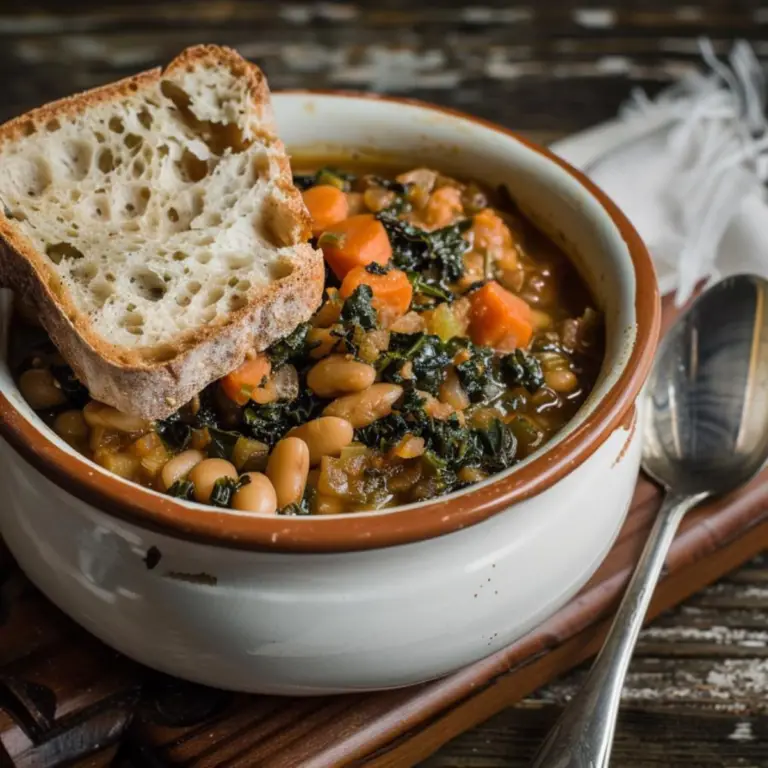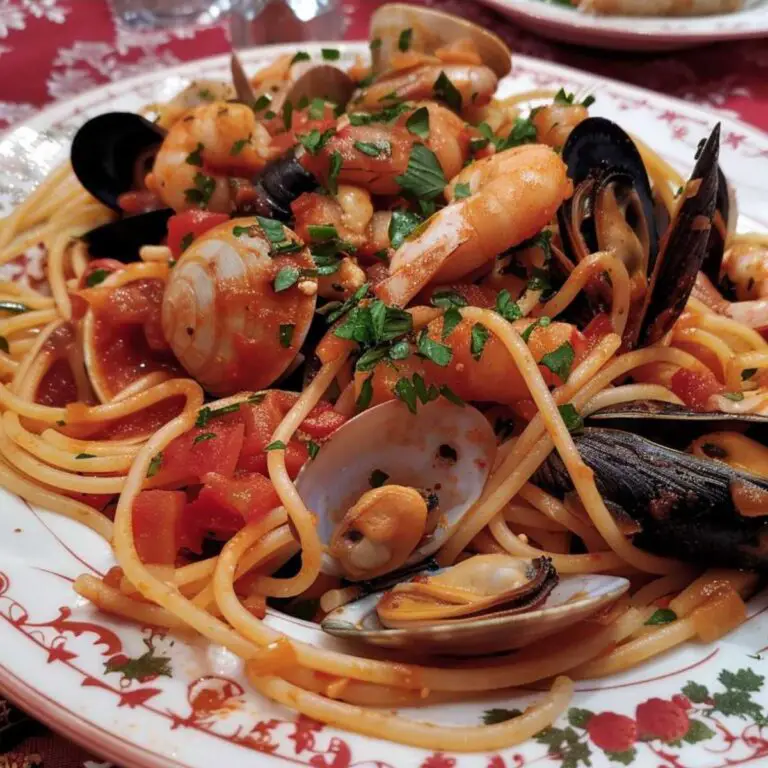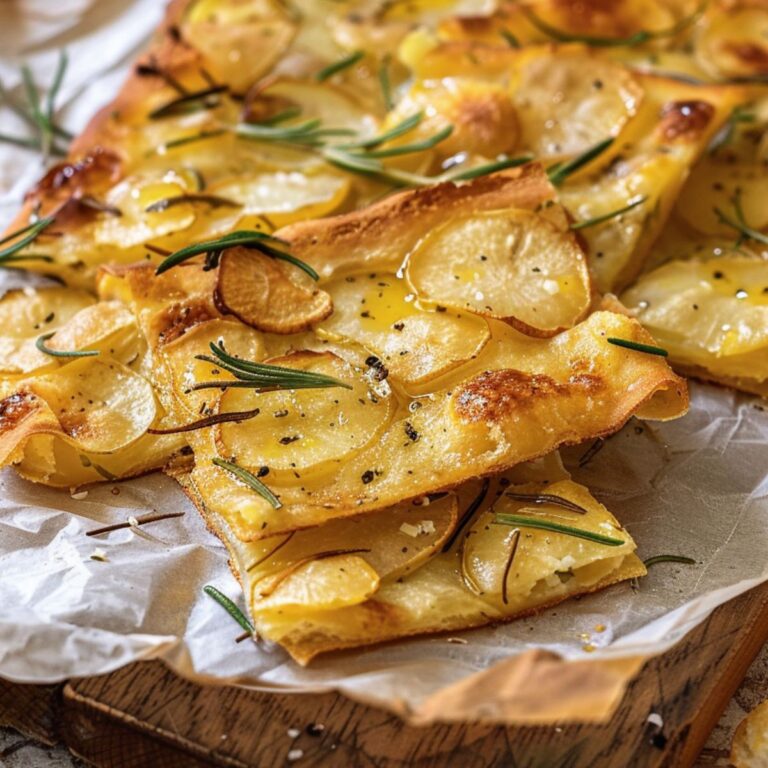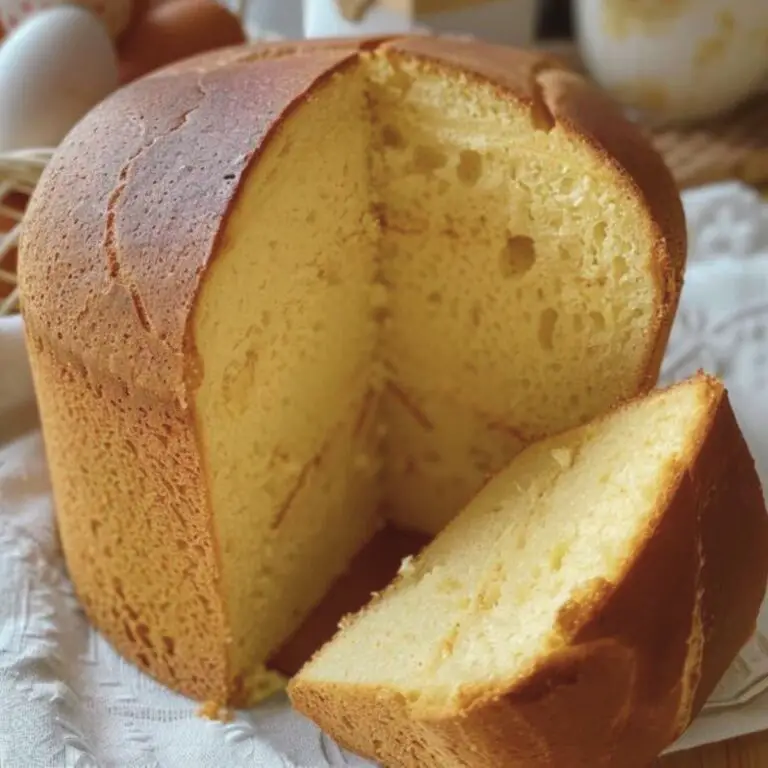Hunter-Style Rabbit, or as we call it in Italy “Coniglio alla Cacciatora,” and for friends, simply “stewed rabbit,” is a truly traditional dish in Tuscany. Every rabbit meat lover should try it at least once in their lifetime, so here’s how I cooked it. Let’s get to the recipe.
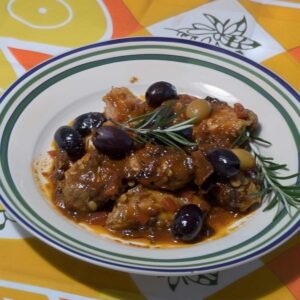
Tuscan Hunter’s Rabbit Stew (Coniglio alla Cacciatora)
Equipment
- Knife
- Skillet
- Large pot
- Paper towels
Ingredients
For marinating the rabbit:
- 2 cups of water
- 2 cups of white vinegar
- Bay leaves rosemary, and black pepper (to taste)
For the recipe:
- 1 farm-raised rabbit cut into pieces
- 3 tablespoons of tomato paste
- 1 cup of young Chianti wine
- 7 ounces of Tuscan olives in brine
- 1 shallot
- 2 cloves of garlic
- 2 bay leaves
- 1 sprig of rosemary
- Salt
- Pepper
- 2 cups of extra virgin olive oil
Instructions
- Marinate Rabbit: Clean the rabbit, keeping the kidneys. Set the liver and head aside for other recipes. Cut the rabbit into pieces suitable for your pot but not too small. Marinate in water and vinegar for 1.5 hours with bay leaves, rosemary, and black pepper. After marinating, drain well and pat dry with paper towels.2 cups of water, 2 cups of white vinegar, 1 farm-raised rabbit, Bay leaves
- Prepare Tomato Paste: Dissolve 3 tablespoons of tomato paste in a little water and set aside.3 tablespoons of tomato paste
- Make Herb Mix: Prepare a mix with finely chopped rosemary and 2 garlic cloves (core removed). Add plenty of ground black pepper. Coat the rabbit pieces in this mix to flavor.2 cloves of garlic, 1 sprig of rosemary, Pepper
- Sauté: Peel and slice the shallot. In a large skillet, heat 8 tablespoons of Tuscan extra virgin olive oil, add bay leaves, sliced shallot, and the larger rabbit pieces first, followed by the pieces with bones. Cook over high heat, stirring occasionally to prevent sticking, until the rabbit is golden.1 shallot, 2 cups of extra virgin olive oil, 2 bay leaves
- Add Wine: Increase the heat and add the Chianti wine. Let it evaporate to concentrate the flavors, leaving the meat with a rosy hue. This should take about 7-8 minutes.1 cup of young Chianti wine
- Add Tomato Paste: Stir in the diluted tomato paste and a couple of pinches of salt. Once boiling, reduce heat to low, cover, and simmer for about 30 minutes, stirring occasionally.Salt
- Add Olives: Halfway through, add the olives and slightly increase the heat to bring back to a boil. Once boiling, reduce heat again and cook for another 15 minutes to thicken the sauce.7 ounces of Tuscan olives in brine
Notes
- Rabbit Substitute: Chicken thighs or drumsticks can be used if rabbit is not available. Adjust cooking time accordingly, as chicken may cook faster.
- Wine Alternative: Substitute young Chianti with any dry red wine (e.g., Merlot, dry Cabernet Sauvignon) or use chicken broth with a tablespoon of balsamic vinegar for a non-alcoholic option.
- Olives Substitute: If Tuscan olives are unavailable, use Kalamata or other briny black olives as an alternative.
- Thickening the Sauce: To thicken a runny sauce, either simmer the sauce on medium heat until reduced or mix a teaspoon of cornstarch with water and stir into the sauce until thickened.
- Slow Cooker Adaptation: For slow cooking, sauté shallot, garlic, and brown the rabbit or its substitute, then transfer to a slow cooker. Cook on low for 6-8 hours or on high for 3-4 hours, adding olives in the last hour.
Discovering the Richness of Rabbit Stew in Tuscan Cuisine
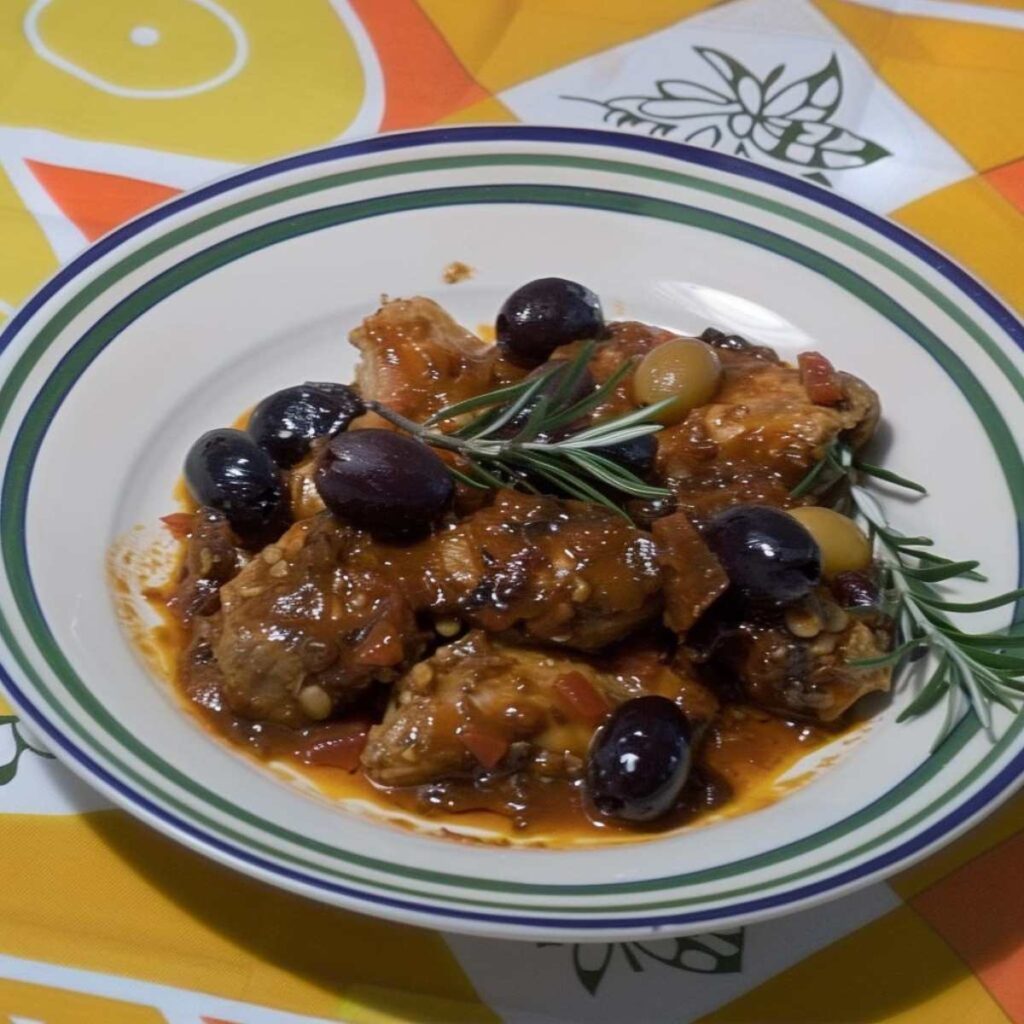
Coniglio in umido embodies the essence of Tuscan gastronomy, a dish that holds a dear place in my culinary heart. Its uniqueness lies not only in its rich flavors but in the way it captures the historical significance of Tuscan cuisine.
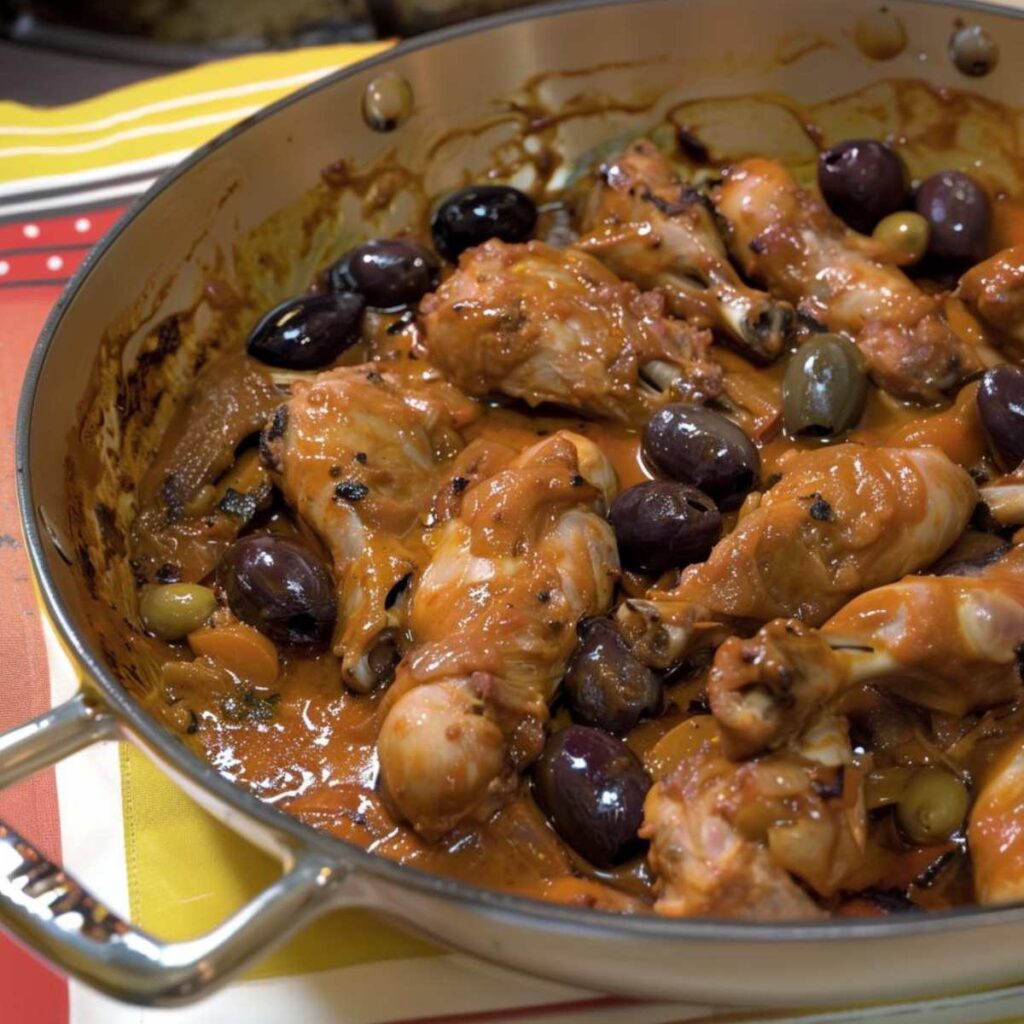
Every bite of this succulent stewed rabbit with black olives and a robust tomato base is a nod to centuries-old cooking traditions. The olive oil, harvested from Tuscan groves, the ripe tomatoes, and the locally sourced rabbit—each ingredient is a testament to the region’s commitment to quality and tradition.
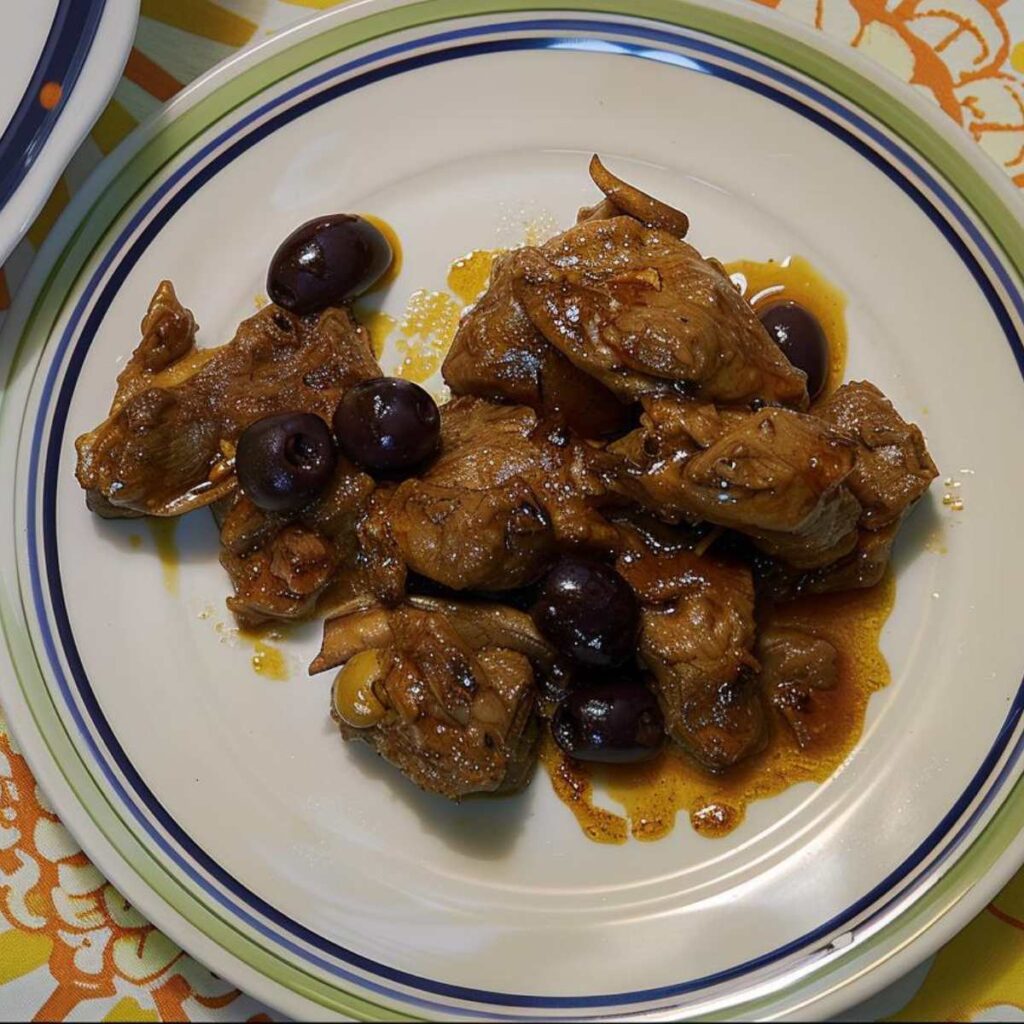
The added black olives bring a distinctive character to the dish, an inviting complexity that makes it stand apart. I always encourage exploration of Lucca’s food specialties, and you can dive deeper into this city’s culinary treasures by visiting the link, where the richness of Lucca’s table extends far beyond my cherished Coniglio in umido.

